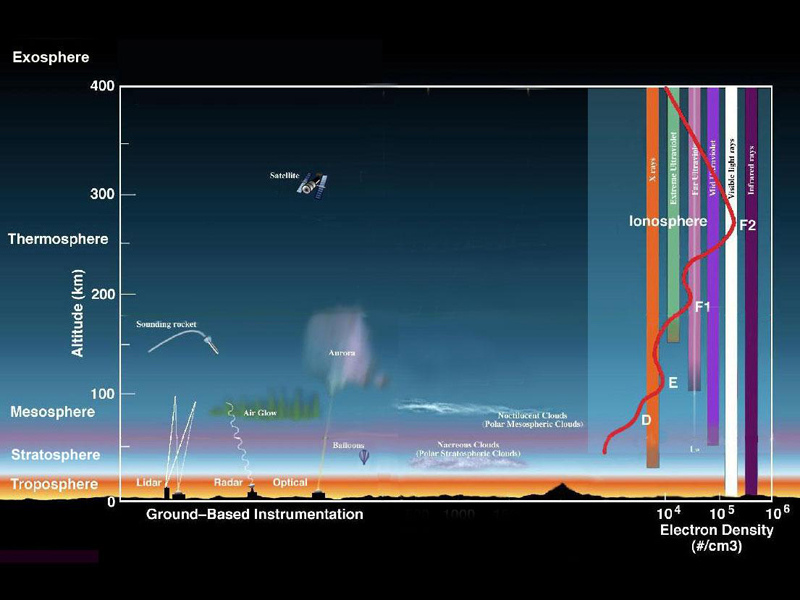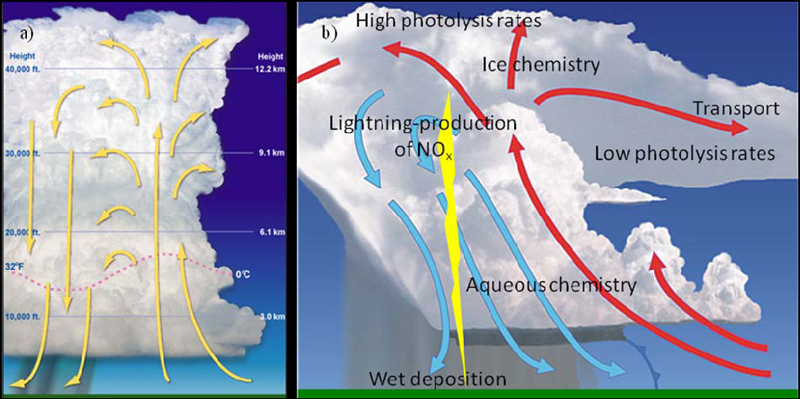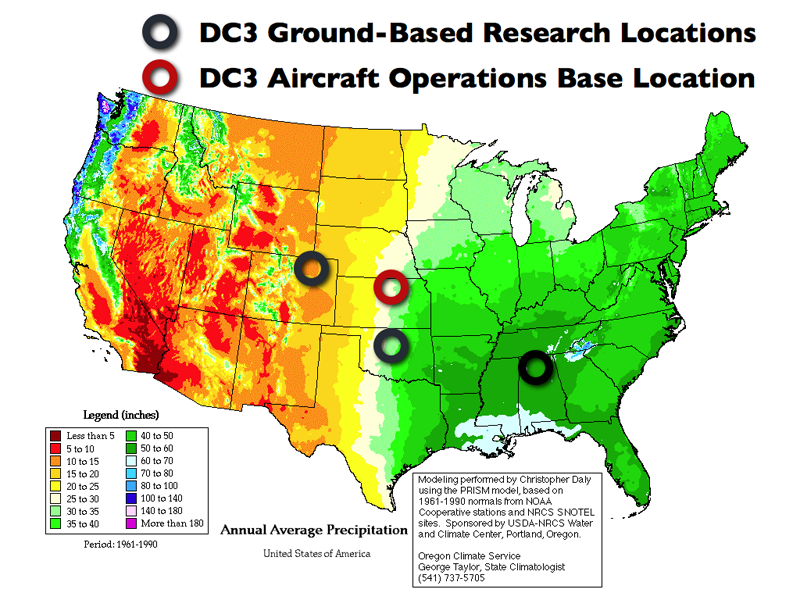1) The Earth's atmosphere is divided into 5 layers. In what layers is the research of DC3 focused?
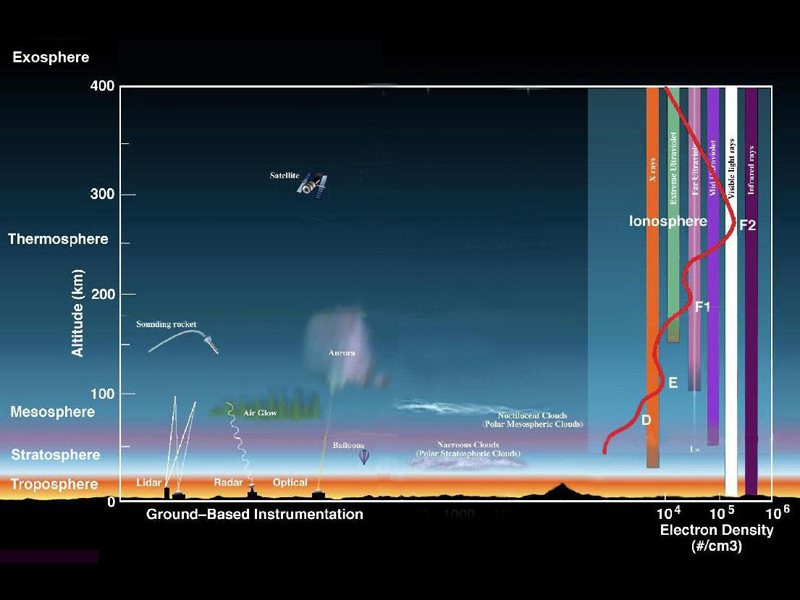 |
| 5 layers of the atmosphere. Image courtesy of NASA. |
- DC3 operations and research will be conducted in the troposphere
- The troposphere is the layer closest to the Earth and is where all of the weather that we see on a daily basis occurs (See the structure of the 5 layers of the atmosphere)
- In mid-latitudes between 30º-60º, the troposphere averages about 10-11 km/~34,000 ft (6 mi) thick
- Did you know? Passenger jets usually fly around ~10 km/35,000 ft (more than 6 mi) - well within the troposphere-stratosphere boundary layer
2) This project is taking a close look at thunderstorms to see how they "suck up" air and pollutants from near the Earth's surface into the higher altitudes of the troposphere. What is the importance of convective clouds in this study?
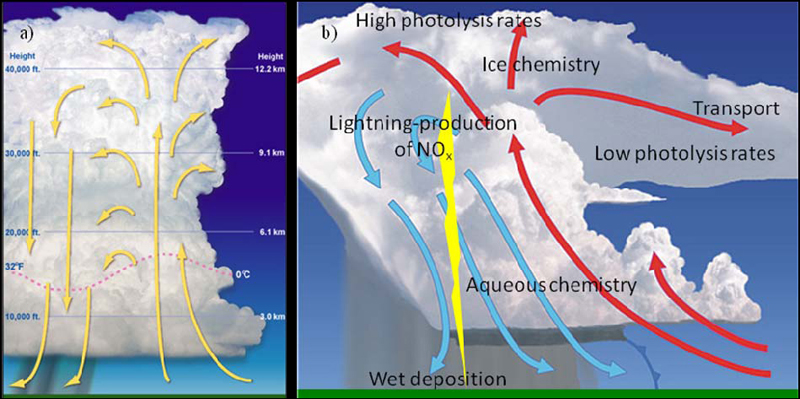 |
| Thunderstorm squall line diagram |
- Convective clouds develop through a sequence of events:
- Incoming solar radiation heats the surface of the Earth, warming the ground-level air and causing water to evaporate into the air
- That warm, moist air then rises due to basic principles of physics that warm air rises, creating upward air movement and bringing with it gases and chemicals from those lower levels
- As that moist air rises, it cools and condenses - creating many, tiny water droplets
3.5) Ice crystals can form along side of supercooled water droplets
The ice crystal then grow and eventually fall from the sky in different forms - snow, hail, rain, etc. - depending on the temperature
- When enough water droplets collect together, rain drops form and fall from the cloud, bring cooler temperatures and air that has been "scrubbed" clean during its time in the cloud
- Convection is a key aspect to this study because it provides the vertical transport of air and chemicals from the lower levels of the troposphere to the upper levels.
- DC3 is taking a closer look at the physical and chemical processes that occur in air parcels while in the deep convective clouds, as well as what happens to the transported chemicals as the cloud system dissipates and passes.
3) The incredible amount of energy released from lightning can break apart chemical compounds, transforming the composition, structure and bonds between atoms and molecules. How does lightning play a role in what is DC3 researching?
 |
| Lightning |
- The energy (heat) from lightning breaks apart N2 (nitrogen gas) & O2 (oxygen gas) molecules
-
When the air cools, some of the N & O atoms bond to form NO (nitric oxide) while the rest reform N2 & O2
-
The same process occurs in a combustion engine
- Nitric oxide is a precursor to ozone formation
- Thus, lightning-generated NO contributes to O3 production in the upper-troposphere
- DC3 scientists are also determining what factors influence the balance between intra-cloud lightning and cloud-to-ground lightning
4) One goal of DC3 is to collect data 12-48 hours after a storm. What are the benefits and why is this time-frame important to the research?
 |
- DC3 scientists expect the convective storm to transport and create the ingredients to make ozone in the upper-troposphere - e.g. lightning generated NO.
- After several hours of solar radiation, nitrogen oxides and hydrogen oxides reacting together, the scientists expect to find more O3 than what was injected into the upper troposphere by lightning and transport alone
5) There are three ground-based observation locations, why were these locations chosen over others in the continental US?
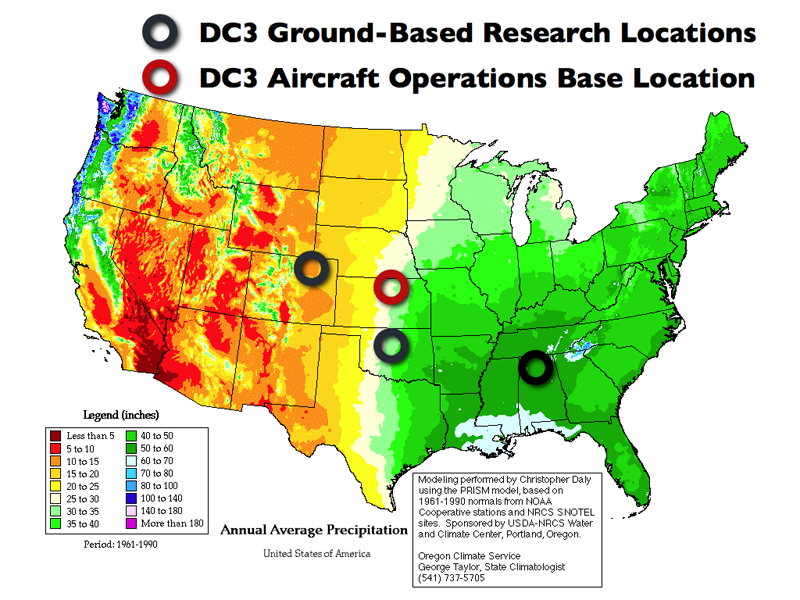 |
| DC3 ground-based research locations |
- Northeastern Colorado
- Central Oklahoma
- Northern Alabama
-
There are sufficient facilities - radar, mobile radar, lightning detection arrays, etc. located in each area
-
The likelihood of convection happening in one of the three locations is high
-
Scientists have the ability to contrast different environments
6) DC3 uses an impressive array of instruments to conduct research. How do the ground-based instruments, airborne instruments and satellite data complement one another?
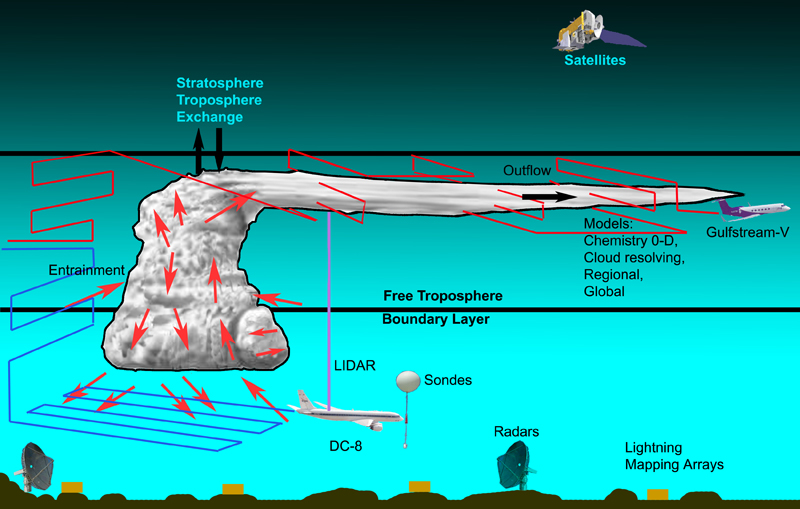 |
| Diagram depicting DC3 operations. |
Ground-based Instruments
- Ground-based instruments will gather data on the storms
- Determine where the air is moving within the storm
- Determine what types of particles are in the storm
- Monitor the intensity of the storm
- Determine the location of the lightning flashes
Aircraft Instruments
- Gather information on the chemical composition of the air
- Detect the state of the atmosphere - temperature, pressure, humidity, wind speed, and wind direction
Satellite Data
- Provide context to the data gathered by radars, lightning map arrays, and aircraft because satellites retrieve data over a large area
*NOTE: Advanced weather and chemical forecast models will be used to predict where storms will likely occur the next day and where the air will go once the storm has transported constituents to the upper-troposphere.
Data Set Documentation Guidelines
Data Submission Instructions
DC3 Data Policy - Final
DC3 Education & Outreach Page
6 Quick Questions
Platforms & Instruments
Science Team
Educational Resources
DC3 In the News
DC3 Blog
DC3 Teacher's Workshop
Outreach Calendar
DC3 EO Summary Report
NCAR ACOM (formerly ACD) DC3 Page
NASA SEAC4RS Project Website
Toolsets for Airborne Data (TAD)
ARM Facilities Website
NASA Lidar Applications Group
Logos








